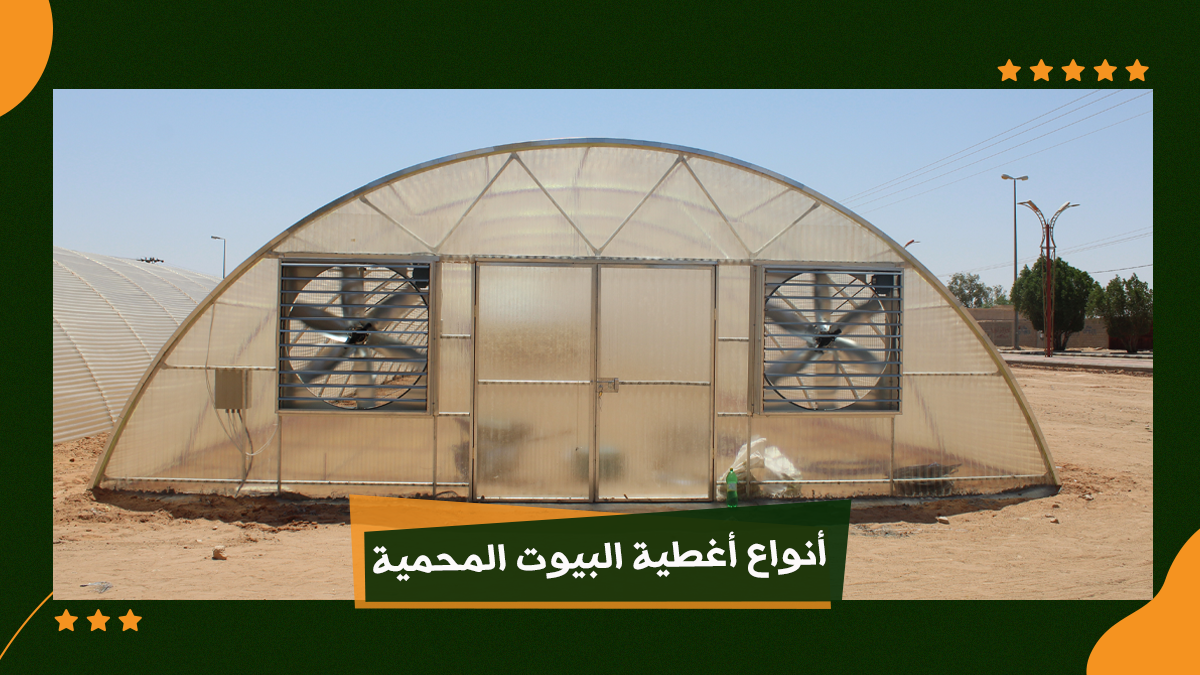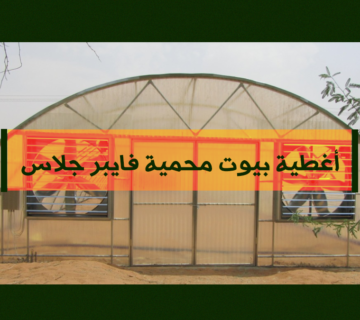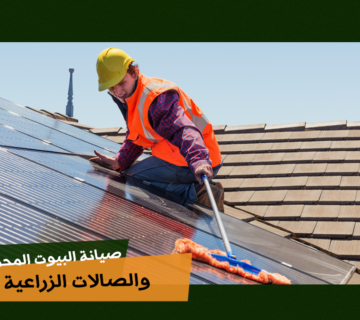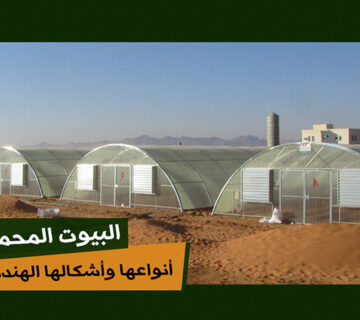Determining the types of greenhouse covers is one of the important steps that must be focused on when establishing the greenhouse, as it is necessary to choose the appropriate covers for the types of plants and crops to be grown, and according to the climatic conditions you need, there are covers that bear heat, and others that absorb ultraviolet rays …and other properties.
Learn about the types of covers offered by the Kenana Homes Factory
قائمة المحتوى
Plastic Cover
One of the most widely used types of greenhouse covers is plastic, but the most popular is polyethylene.
This type is characterized by ease of formation, and is suitable for houses with structures made of galvanized pipes.
Specifications of plastic sheeting
- Its thickness ranges between 200:180 micrometers.
- The light transmittance ranges between 95:85%..
- UV resistant; This is to avoid infecting plants with sun blight
- In addition to having low infrared penetration; So that you don’t lose the heat you gained at night.
Features of plastic sheeting
Greenhouses made of plastic have a number of advantages; For example,:
- Lightweight.
- Strength and durability, which are due to the addition of certain chemicals to the plastic.
- Its ability to retain heat for a long time.
- It has a long life, which may reach three seasons or cropping cycles.
- Less exposed to wind.
- They are often available in the market, at affordable prices.
Fiberglass Cover
Fiberglass is manufactured by impregnating fiberglass fabrics with treated polyester.
After completion of the impregnation process, this mixture turns into a kind of hard plastic, with high mechanical properties.
Fiberglass Cover Features
- Its light transmittance is 80-92%.
- Resistant to cold.
- Temperature resistance from 40° to 140°.
- Harmony in thickness.
- Low transmittance to ultraviolet rays.
- Accuracy in wave measurements.
- Specific density 1.4 g/cm2.
Polycarbonate Cover
Also among the most common types of greenhouse covering is polycarbonate.
Polycarbonate is a thermoplastic that has a high degree of durability, and is made from a polymer treated with carbon, which gives it both strength and flexibility, and allows it to be molded and molded.
Despite its flexibility; Polycarbonate is shatter-resistant, a better alternative to glass, and some attractive colors are also available.
Learn more types of greenhouse coverings
Polycarbonate Cover Features
- The transparent panels have a high transparency rate, up to 95%.
- It is more resistant to breakage than acrylic and glass, and is 250 times stronger than glass.
- It is not affected by any climatic changes, specifically from minus 40 degrees Celsius to 160 degrees.
- Its color is stable and does not change for life.
- Easy installation, and the possibility of cold installation.
- It contains a layer that isolates the sun’s rays as well as UV rays.
- Lightweight.
- It is also non-flammable, which makes it combustible.
Shadow Net Cover
It is one of the types of covers used in greenhouses and agricultural seedlings, and it is made of polyethylene, which is a type of high-density plastic.
Uses of shade netting
- Used in vegetable nurseries.
- It is also used for shading purposes in general.
- Plays an important role in protecting plants from sunlight.
- It is used to cover sports fields, due to its ability to reduce wind force and sun reflection.
With this, we have finished presenting the most famous types of greenhouse covers.. It remains to point out that there are more other types, which are provided by greenhouse factories in Saudi Arabia, on top of which is the Kenana house factory, each of which has a number of specifications and special features.

 then 'Add to home screen'
then 'Add to home screen' then 'Add to home screen'
then 'Add to home screen'





لا يوجد تعليقات